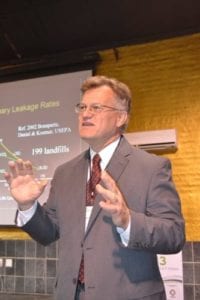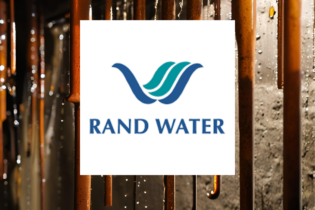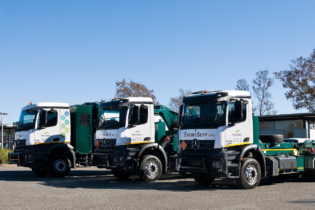“Historically, landfills have been the most common method of waste disposal around the world,” said Dr George Koerner delivering his Keynote address for the Landfill 2013 Conference, entitled “Geosynthetics in Containment: Past, Present and Future,” on Wednesday 16 October 2013 at the Misty Hills Country Hotel, Muldersdrift, Gauteng.
The Landfills 2013 Conference is being hosted by the Landfill Interest Group of the Institute of Waste Management of Southern Africa (IWMSA) Central Branch, in association with the Geosynthetic Interest Group of South Africa (GIGSA). “Landfill 2013, with its theme: “Effective environmental protection from the residues of modern civilisation” is bringing local and international experts together and creates an important platform for all players in the industry to share views, knowledge and experiences,” said IWMSA President, Dr Suzan Oelofse. “The organising committee is very excited to have Dr George Koerner at the conference to shed some light on developments within geosynthetics. George is an international expert on geosynthetics research based at the Geosynthetics Institute (GSI) in the USA and he will be shedding some light on the past and future of geosynthetics for use in waste containment and what happens when things go wrong,” explained Landfill 2013 Chairman, Jonathan Shamrock. According to Koerner, the concept of landfilling waste is by no means stationary and his paper served to present trends and developments in regard to design, construction and operations of landfills. “In the evolution of the modern landfill, they are currently being considered as reactors that can be a viable and abundant source of materials and energy.” Additionally, he notes that in the design and construction of modern landfills, it is important to consider what he terms “future trends” such as wet landfilling, banning the disposal of untreated waste, post-closure beneficial landfill uses and redirection of recycling efforts to create the perpetual landfill.Other highlights of the Keynote Address included a discussion of the essential components for a perpetual landfill, in the context of Geosynthetics,filling operations, microbial degradation and waste mining.
In addition, Koerner also discussed the design changes brought about by the introduction of these modifications to the operation of the facility in relation to accuracy of stabilization time predictions, amount of unreached waste, cell and landfill footprint requirement and landfill cogeneration and renewable energy opportunities. Koerner adds that, typical of most new technologies, geosynthetics crept into Civil Engineering applications in a very sporadic and tentative manner. Over the past 40 years the technology has emerged to become widespread. Attesting to this widespread usage and great benefit cost “geosynthetics” are now a 10 billion dollar business worldwide, (IFAIGMA 2012 market report). Good performance has been the driving force behind much of the growth in “Geosynthetics” in the landfills sector. As the industry implements the concept of the perpetual landfill, we will again ask geosynthetics to evolve and stretch to safely protect the environment. “Solid waste landfills require lining systems that will stand the test of time and providereliable leak protection. Landfill lining systems provide significantly lower permeability,improve ease of installation and increase the amount of usable space. Geomembranes used in conjunction with Geosynthetic Clay Liners (GCLs) deliver the lowest permeability liner system available. It is envisioned that the waste can be made less harmful in this dynamic step-by-step process. We will wait and see if such strategies are implemented,” concluded Koerner.







